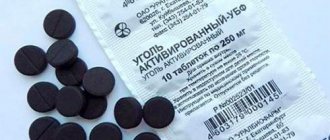An enema is considered a fairly common procedure for cleaning the intestinal cavity. To carry out this manipulation, you can use a regular rubber syringe with a soft or plastic tip, but for greater efficiency it is recommended to take an Esmarch mug. A similar device can be found in the pharmacy chain; it looks like a large rubber container, similar to a heating pad, which has a rubber pipe and a small tap. Your doctor can tell you how to perform the procedure correctly and which enema solution is best to use at home. But when there are no special instructions, you can do an enema using the classical method.
Indications for the cleansing procedure
With the help of a regular cleansing enema, you can quickly and effectively cleanse the intestines of deposits of toxins and toxic substances that lead to intoxication of the body and various diseases. The main indications for performing this procedure are:
- chronic constipation and stool retention;
- planned surgical interventions;
- upcoming birth.
In addition, the cleansing procedure is often carried out for poisoning of varying degrees of severity and before intestinal radiography.
A cleansing enema must be done before medicinal or nutritional procedures that are performed through the rectum.
When should an enema be used?
Cleansing the intestines may be necessary both to prepare for further medical procedures and to facilitate the act of defecation. Among the main indications for performing an enema:
- prolonged constipation (3 or more days);
- preparation for x-rays of the gastrointestinal tract, pelvic organs - urinary and reproductive systems;
- preparation for rectal endoscopy;
- immediately before birth;
- preparation for any abdominal operations;
- preparation before a visit to the proctologist.
It is recommended to rinse the rectum before administering a medicinal or vitamin enema to ensure good absorption of drugs and microelements.
Patients are often interested in how to perform an enema themselves, so that they do not have to call a specialist or go to the hospital. But in some cases, you cannot do without consulting a doctor, because even such a useful procedure as rectal lavage has a number of contraindications:
- stomach and intestinal bleeding;
- hemorrhoids and anal fissures;
- colon cancer;
- prolapse;
- the first 5 days after surgery on the gastrointestinal tract.
If you are not sure that a cleansing enema is safe for you, it is better to postpone the procedure until a professional arrives. By calling MedInHome specialists, you ensure that any manipulations are carried out at the highest level. In addition, all services are anonymous - only you and he will know about the doctor’s visit.
What solutions can be used
The solution for a cleansing enema can be different; in some cases, they take ordinary pre-boiled water, cooled to room temperature. The following liquids are most often used to cleanse the intestines:
- a weak solution of kitchen salt;
- baking soda solution;
- faint pink solution of manganese;
- decoction of chamomile;
- decoction of herbs and yarrow flowers.
Prepare the solution immediately before the manipulation; the water used for the cleansing enema must be boiled.
Any enema solutions should be at room temperature. Very hot liquid will lead to strong absorption of toxins, and cold liquid can provoke an inflammatory process.
Reviews from doctors about the procedure
Performing a cleansing enema is what doctors advise for long-term constipation. Of course, you will have to spend a little time figuring out how to give an enema yourself, but the result will be worth it.
Vladimir Pavlovich Kiriyenko, proctologist: “Timely lavage of the intestines quickly improves the condition of patients - there is no point in dragging on to the point of fainting. In addition, when performing manipulations at home, either independently or with the help of calling a doctor, patients do not experience such embarrassment as in the hospital.”
Doctors remind us of the importance of consulting with a professional: the patient does not always know that he has contraindications to the procedure.
According to surgeon A. Markovskaya: “The main obstacle to independent intestinal lavage is ignorance of the optimal volume and temperature of the administered fluid. It is very easy to harm yourself, so avoid self-medication as much as possible. Moreover, nowadays it is very easy to call a specialist to your home.”
How to prepare saline and soda solutions
The saline solution gently removes toxic substances and disinfects the intestinal cavity. To prepare a medicinal solution, you need to dilute a teaspoon of kitchen salt in 1.5 liters of water. After this, the resulting liquid is filtered through several layers of gauze and used for its intended purpose.
Soda solution helps soften fecal stones and remove them from the body. To prepare such a medicine for an enema, you should take two tablespoons of baking soda without topping and dilute it in one and a half liters of warm water. For the solution to be as effective as possible, add a tablespoon of glycerin or sunflower oil to the water to soften the intestinal lining.
A solution with the simultaneous use of soda and salt helps a lot. It is also recommended to add oil or glycerin to this cleaning liquid.
You can use a solution of pharmaceutical rehydron to cleanse the intestines, which is prepared according to the attached instructions.
Cautions
A homemade enema is not the best option for colon cleansing. During use, mechanical damage to the tissues of the anus and rectum, thermal burns, and excessive stretching of the intestinal walls, even to the point of rupture, cannot be ruled out. Some of the complications pose a direct threat to human life, therefore, unless absolutely necessary, it is not recommended to use an enema from improvised means.
In order to avoid the need for an enema to facilitate bowel movements and cleanse the intestines during constipation, it is recommended to carry out preventive measures. They allow you to normalize stool and include a rational diet and physical activity.
Bibliography
- Privorotsky V.F., Luppova N.E. Modern approaches to the treatment of functional constipation in children. RZhGGK, 2009
- Plotnikova E.Yu. Modern ideas about constipation. Attending physician, 2015
- T.P. Obukhovets, T.A. Sklyarova, O.V. Chernova. “Fundamentals of Nursing”, Rostov-on-Don: “Phoenix”, 2003.
How to prepare a solution of potassium permanganate
Potassium permanganate is a versatile substance that is used for various medicinal purposes.
A weak solution of potassium permanganate is indicated for poisoning, both for washing the stomach and intestines. To prepare the medicinal composition, you need to dissolve 5-6 grains of potassium permanganate in a small volume of water, and then pour the resulting concentrate into the total volume of liquid for the procedure. First, the solution is filtered through several layers of gauze so that undissolved crystals do not fall on the intestinal mucosa, otherwise there may be a burn.
Types and characteristics of the tool
The main difference between syringes is the type of their tips, which can be soft for type A (made of polyvinyl chloride) and hard for type B (made of plastic). A special gynecological type - an irrigation syringe - has additional holes on the sides of the tip. The material from which the main part of the device is made is usually polyvinyl chloride, plastisol material or rubber.
Content:
- Types and characteristics of the tool
- When is douching necessary?
- Methods for storing and cleaning syringes after manipulation
When choosing a device, you should pay attention to some details. For example, a good syringe should not have an unpleasant chemical odor, the material from which it is made should be smooth and uniform, non-porous, the tip must be made according to precise patterns so that its structure is free from any roughness, layers, etc., which could injure delicate mucous membranes shell when used. The device itself must be strictly symmetrical, without distortions. When releasing the solution with its help, the latter should not be colored.
Most of these devices are made today from polyvinyl chloride. If the material for syringes is of poor quality, then the device itself will turn out no better - it will emit a chemical or masking “fragrant” odor and be painted. In addition, the porosity of the texture of the material can retain some components of the medicine collected in the syringe, which will worsen the effectiveness and quality of treatment. Moreover, such a device will be very difficult to clean later.
Syringes, depending on the types and materials of manufacture, are intended for the following specific purposes:
- with soft tips (type A) – they suck out fluids after surgical operations from various body cavities, and are able to rinse cavities for therapeutic and prophylactic purposes;
- with hard plastic tips or with tips made of polyvinyl chloride (type B) - used for administering enemas or microenemas, can be used as an instrument for irrigating the vagina;
- irrigation – gynecological, used for therapeutic and prophylactic intravaginal irrigation.
Preparation of chamomile decoction
At home, it is good to use chamomile decoction for a cleansing enema. This medicinal composition relieves inflammation and has a bactericidal effect. To prepare the decoction correctly, you need to take 4 tablespoons of chopped plant material, add two liters of cold water and bring to a boil. After this, leave for 20 minutes, strain, cool to room temperature, then use as intended.
To prepare a decoction, you can take either dry herbs or fresh chamomile.
Flaws
When figuring out how to do a pear enema, you need to take into account the fact that this procedure has a number of disadvantages:
- prolonged use can provoke a deterioration in intestinal motility or cause an absolute loss of ability to defecate;
- Balloon bulbs have a maximum volume of 500 ml, and in some situations it is necessary to administer 1.5 liters of solution; in this case, you have to administer an enema several times;
- There are a number of diseases in which performing an enema with a rubber bulb can cause serious complications - rupture of adhesions, stretching of the intestinal walls;
- leads to the leaching of beneficial microflora;
- irritates the mucous membrane, which provokes increased inflammation, the formation of intestinal spasms and increased pain.
Execution technique
It is imperative to adhere to the recommended enema technique. Esmarch's mug is first rinsed with hot water and the air is removed from it, then hung slightly above the bed where the procedure is planned to be carried out. The algorithm of actions looks like this:
- The person lies on his left side, bends his knees slightly and pulls them towards him.
- An enema tip, which is previously coated with Vaseline or a thick cream, is inserted into the anus with gentle rotational movements.
- Open the tap so that the solution begins to pour into the intestinal cavity; the pressure can be adjusted.
- After all the water has come out of Esmarch's mug, you need to lie down for 10-15 minutes, and only then go to the toilet.
All instruments and other devices used for enema at home are thoroughly disinfected, then wiped dry and folded.
The couch or bed where the procedure is carried out should first be covered with oilcloth to prevent getting wet.
Complications
Having figured out how to properly perform a pear enema on yourself, you need to understand that this procedure should be carried out only as prescribed by the attending physician, which is directly related to the following factors:
- With frequent enema administrations, the intestines will refuse to fulfill their direct duties. It is possible that the formation of “lazy gut” is a disease that appears as a result of weak intestinal motility.
- During an enema, not only feces and gases are removed from the body, but also beneficial microflora, which is required for high-quality digestion and absorption of food. In addition, the lack of beneficial microflora in the intestines can cause the proliferation of pathogenic microorganisms.
- Incorrect insertion may cause damage to the rectum. If you're lucky, a small wound will form on the mucous membrane; if not, a rupture will occur, and the entire contents of the intestine will be transported into the abdominal cavity. Peritonitis will occur and then you simply cannot do without surgical intervention.
- Lack of normal bowel movements can cause intoxication, as harmful components will dissolve and begin to be absorbed.
- The introduction of excessive amounts of fluid causes distension of the intestinal walls. In the inner part of the lumen, pressure increases. This provokes irritation and complication of pathologies.
Performing a therapeutic enema
Sometimes it happens that various medications need to be administered through the intestines. The technique of performing a medicinal enema is slightly different from the cleansing procedure and looks like this:
- Perform a cleansing enema with slightly salted or clean water.
- The medicinal composition is poured into Esmarch's mug and the tip is carefully inserted into the anus.
- Open the tap so that water flows into the rectum very slowly.
After performing the treatment procedure, you need to lie down for about 20 minutes. Then you can get up, if you have the urge to go down, immediately go to the toilet.
How to properly prepare the site for a future procedure?
Preparing for an enema is an important stage of the procedure.
First of all, you need to find a comfortable lounger or couch on which the patient can sit. The procedure site is covered in advance with a practical, easy-to-clean oilcloth, one end of which is lowered into a basin, bucket or any other container (this is necessary in case the patient is unable to retain the liquid inside himself during enema manipulations).
As mentioned just above, all medical “equipment” must be properly processed. All parts of Esmarch's mug are thoroughly washed inside and out; plastic elements - boil if possible. After this, you can begin preparing the rinsing solution itself.
Features of a cleansing enema
In order for colon cleansing to be as effective as possible, you need to adhere to certain recommendations:
- The optimal time to perform an enema is considered to be early morning or late evening.
- The water should be boiled, the temperature of the liquid is about 30 degrees.
- The total volume of water that is poured into the intestines should not be more than one and a half liters. But you need to keep in mind that a volume of liquid less than a liter will not give results.
- Esmarch mug tips should be boiled before each use and after each use.
- The tip is lubricated with thick baby cream or Vaseline to facilitate its insertion.
The prepared medicinal solution is injected slowly into the intestinal cavity. After administering the entire volume of liquid, you must wait at least 10-15 minutes so that hard stool and stones become softer. To reduce pain during this period, it is recommended to breathe deeply.
A procedure such as an enema is periodically recommended for people of different ages. It can be performed to cleanse the intestines of toxins and waste, as well as to introduce nutritional and medicinal compounds into the body. To increase the effectiveness of this manipulation, certain rules should be followed.
What is needed to perform an enema?
To perform a cleansing enema,
use an Esmarch mug (it can be bought at almost any pharmacy). This is a tank (glass, enamel or rubber) with a capacity of 1.5-2 liters. At the bottom of the mug there is a nipple onto which a thick-walled rubber tube is placed. The length of the tube is about 1.5 m, the diameter is 1 cm. The tube ends with a removable tip (glass, plastic) 8-10 cm long. The tip must be intact, with smooth edges. It is preferable to use plastic tips, since a glass tip with a chipped edge can seriously injure the intestine. Next to the tip on the tube there is a tap that regulates the flow of fluid into the intestines.
For enemas, use drinking water. The water temperature is about 37.7-38 degrees. For children, it is better to use only boiled water.
Application of purified water
Cleansing enemas can be done using an Esmarch mug. They enhance intestinal motility and evacuate stagnant feces. The enema water should be warm. The procedure is indicated for patients with constipation, intoxication, before surgery, and instrumental diagnostics. Rules:
- cover the couch with a disposable waterproof diaper;
- ask the patient to lie on his side, pull his legs up to his chin, insert the tube into the anus;
- what kind of water to do an enema with: pour warm or room temperature water into a pear, hang the mug over the bed, above the level of the peritoneum;
- open the valve, introducing liquid;
- to reduce the speed of pouring water, lower the mug lower;
- after completing the procedure, close the tap;
- The patient is advised to lie down for 5-10 minutes, after which he has a bowel movement.
In an emergency, an enema with tap water is allowed. Cleansing procedures are not recommended for patients with inflammatory processes in the colon, ulcerative lesions, tumors, exacerbations of hemorrhoids, and rectal bleeding.
Point No. 1. To wash the intestines of an adult, you will need about two liters of clean water.
Homemade enema solutions
As we have already said, some enemas are given to patients to cleanse the intestines, however, in general, this medical procedure can also be used for therapeutic purposes.
Enemas of this type are usually given to patients immediately after cleansing the intestines, since otherwise it is very difficult to achieve a therapeutic effect, however, doctors often rely on the circumstances and make a decision that is adequate to the situation.
Enemas can have two types of effects:
- local;
- and systemic.
Next, we will look at what compounds are used in therapy and what each of them does.
Solutions with an enveloping effect
Very often, for medicinal purposes, enveloping solutions are used for IBS - irritable bowel syndrome. Particularly popular among the liquids used for this is starch solution. Here's how it's prepared.
- First, the ingredients are taken:
100 milliliters of clean water at a cool temperature; - 5 grams of starch (about half the size of a teaspoon);
- 100 milliliters of boiling water.
Solutions prepared directly from decoctions can have a similar effect:
- white, unmilled rice;
- flax seed.
- A tablespoon of one grain or another is mixed with 250 milliliters of cold water.
- After half an hour, the resulting liquid along with its contents is poured into a saucepan, the water in which is then brought to a boil.
- The resulting broth is cooled to a temperature of approximately 35 degrees Celsius, then filtered from the grain contained inside and poured into the intestine in a volume of about 100 milliliters.
Herbs for washing
After a course of cleansing enemas, colon peristalsis is weakened, and to normalize intestinal functions, take herbal medicinal infusions, perform breathing exercises and do self-massage of the abdomen. To restore colon peristalsis, you need a herbal mixture - mint, yarrow, chamomile. You need to take an infusion of these herbs for 10 days. In addition, it is advisable to take activated carbon dissolved in mineral water in the morning after breakfast.
Herbal Cleansing – Medicinal herbs can be used internally. Many herbs have diuretic, bactericidal and laxative properties, promote the removal of waste and toxins, and restore intestinal microflora. There are many recipes for colon cleansing. Herbal mixtures can consist of various components. Ready-made dry mixtures can be purchased at pharmacies. To normalize digestion and cleanse the intestines, the most effective herbs are:
- immortelle;
- elecampane;
- chamomile;
- calendula;
- parsley;
- Rowan;
- flax seed;
- sage.
You can cleanse the intestines with the help of medications. Such drugs are prescribed by a gastroenterologist. One of these medications is Fortrans, a laxative drug. For a deep and complete cleansing of the colon, you need to dilute 3-4 packets of the product in 3-4 liters of water. Drink this amount of solution over 3-4 hours in portions of 200 - 250 ml. In an hour, the expected effect from the product will be obtained, lasting up to 10 hours.










